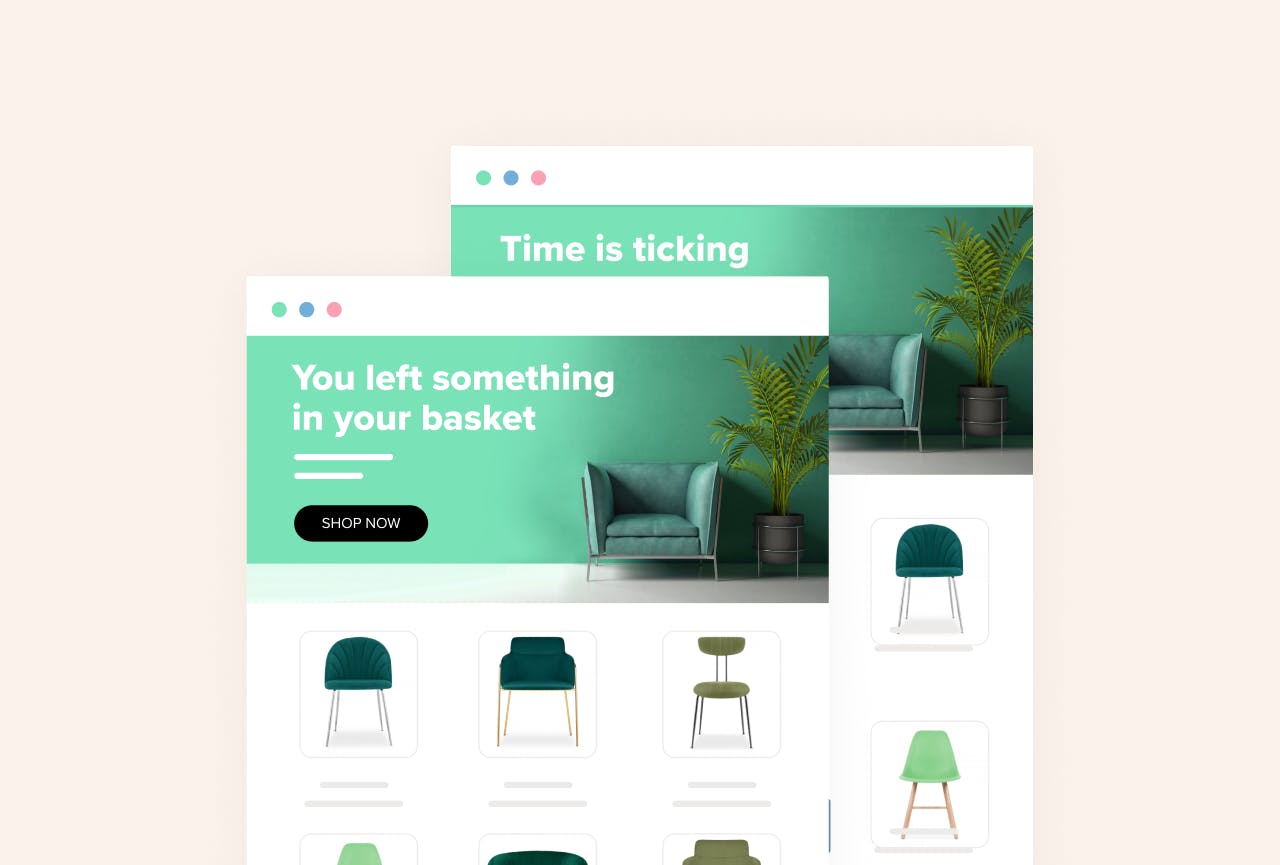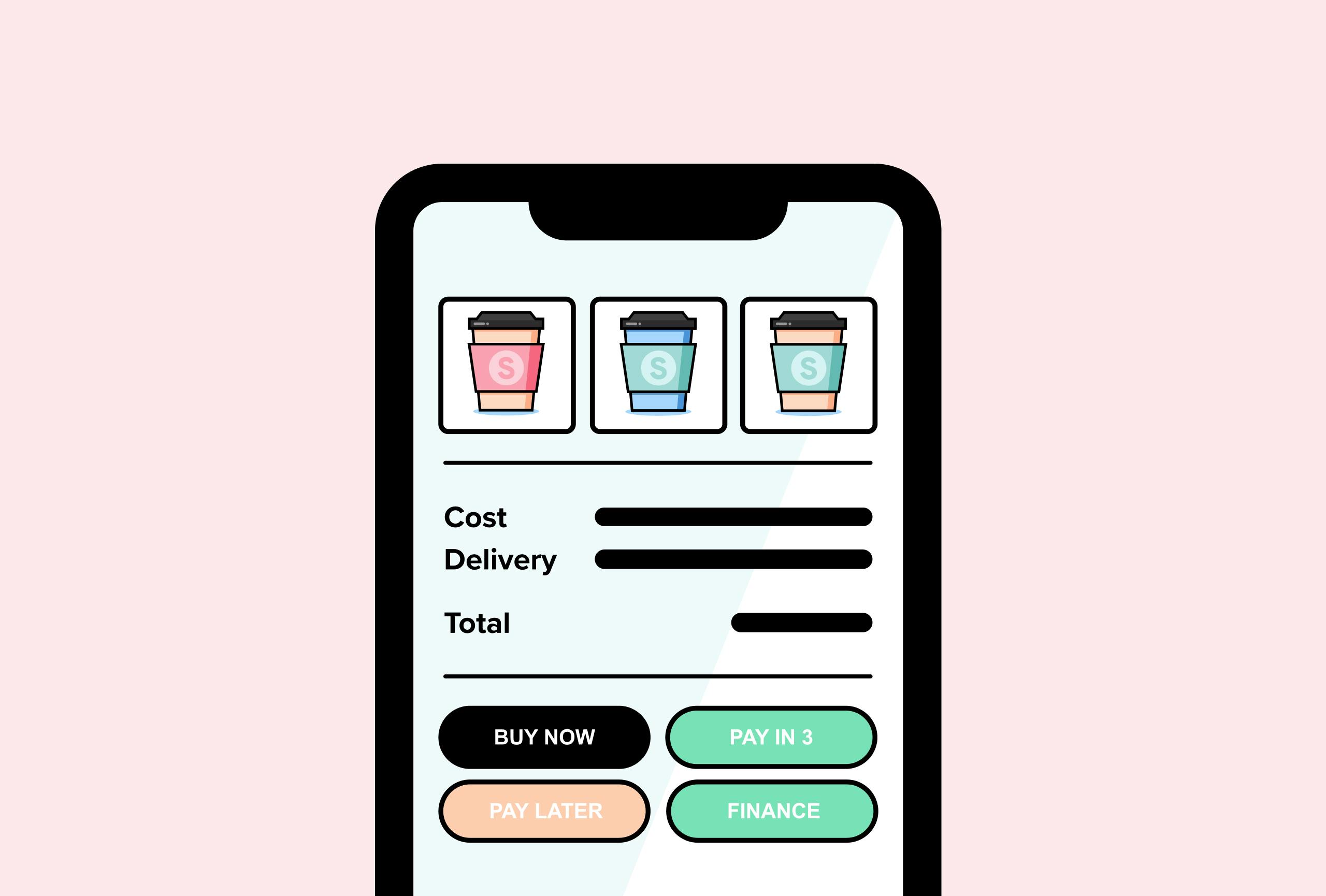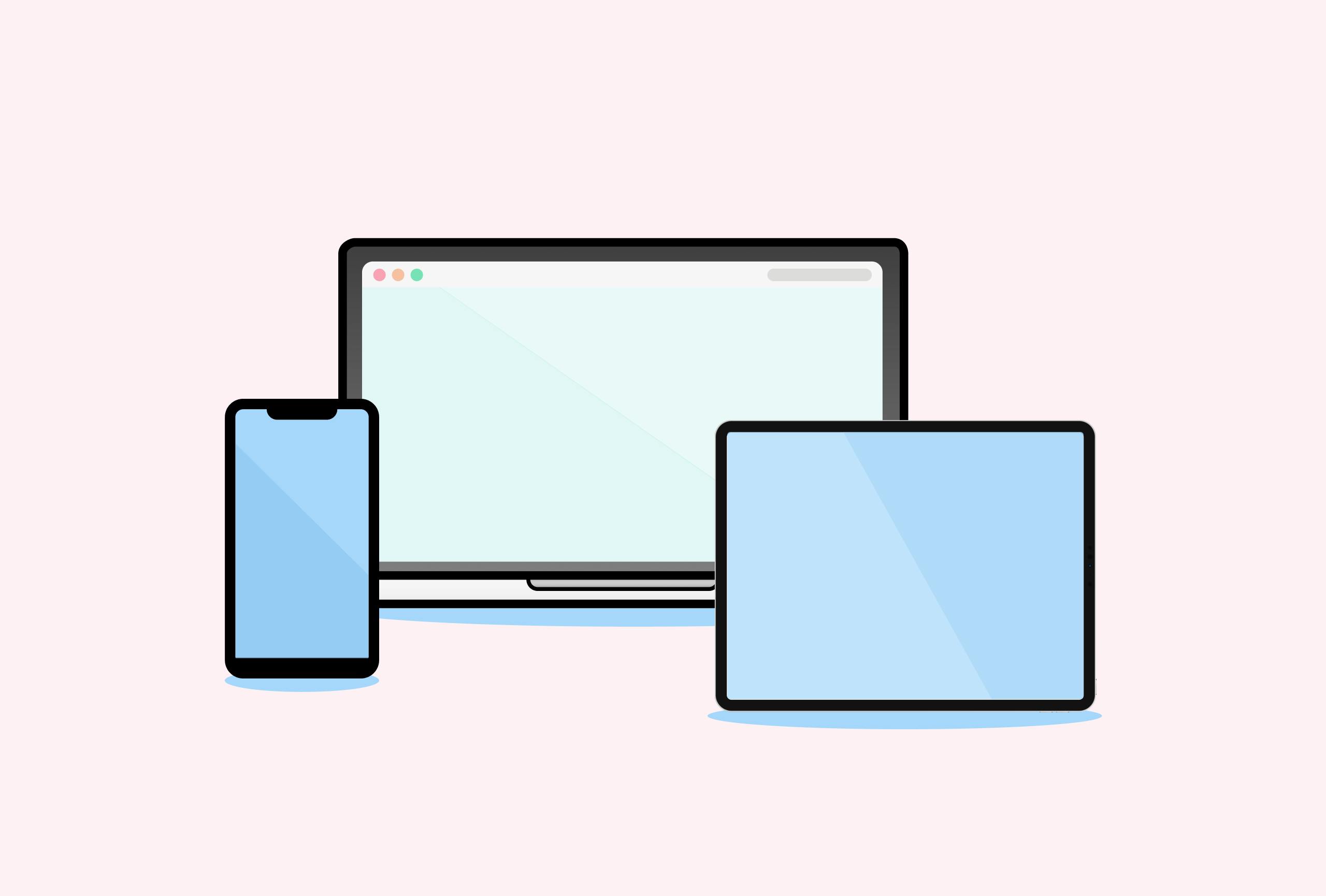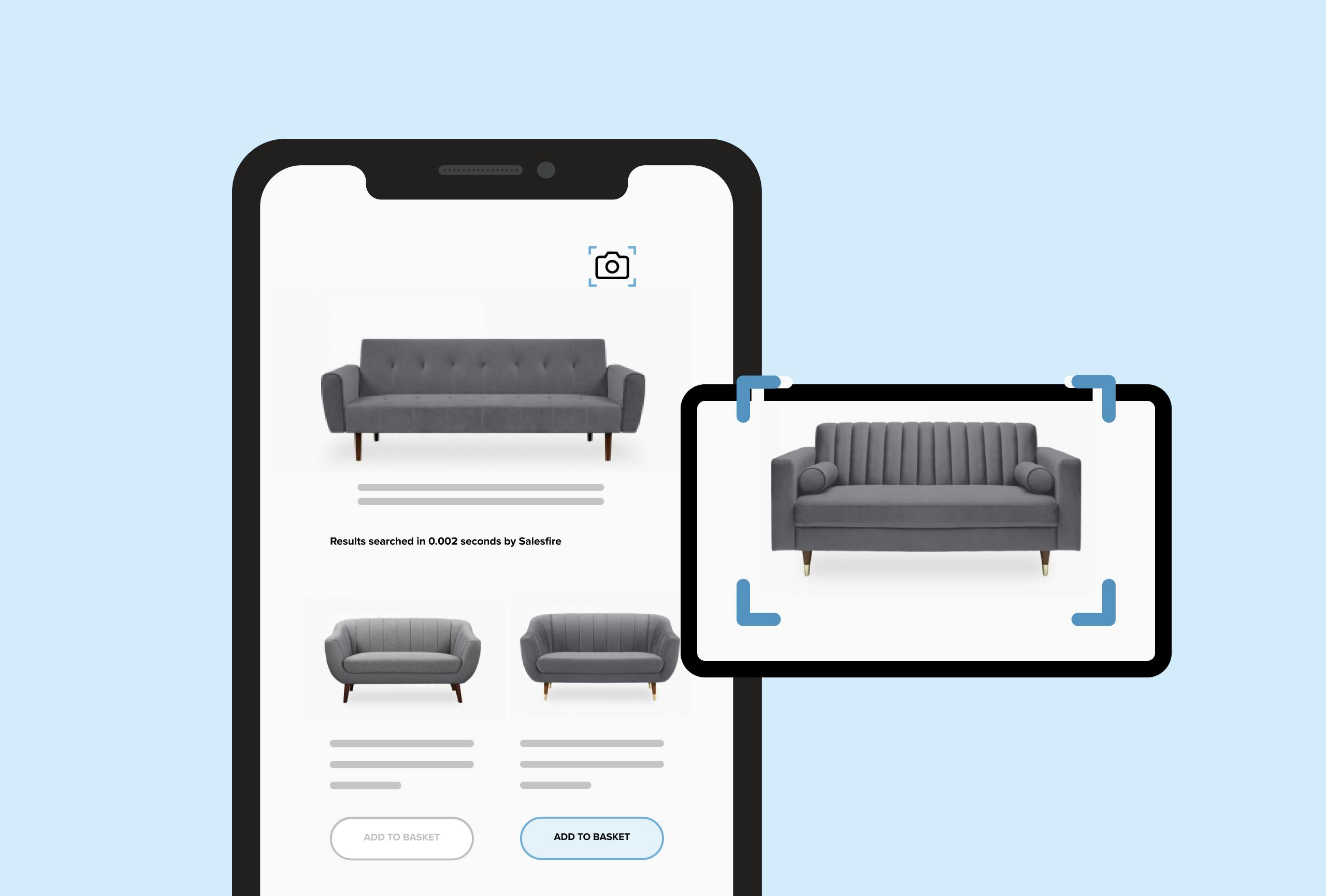Optimising conversion rates for eCommerce sites is crucial for those looking to achieve sustainable, long-term growth.
Constantly driving new traffic to your site is all well and good, but once shoppers arrive on your homepage, you need to create a seamless, personalised customer journey, otherwise your PPC and paid social efforts may have been for nothing.
Thankfully, you can make a number of simple changes which will help persuade window shoppers to convert into loyal customers.
We have compiled a list of nine highly effective conversion rate optimisation strategies that will allow you to squeeze the most out of your website traffic, drive revenue and cultivate loyal, returning customers.
Related: Are you new to conversion rate optimisation? Check out our back to basics guide on all things CRO.
How to Increase Your eCommerce Conversion Rate

1. Inject dynamic content
Personalisation goes hand in hand with eCommerce. Customers expect their shopping experience to be tailored to their tastes and preferences.
You might think it sounds challenging to create unique customer journeys for each visitor, but you can let AI and machine learning do the hard work with personalised Product Recommendations.
Product Recommendations use data-driven insights to suggest items to customers based on their on-site behaviour.
In addition to integrating Product Recommendations on your homepage you can also use them as a last-minute incentive on the checkout page.
These intelligent suggestions encourage your customers to build bigger baskets to increase your AOV.
Personalising the customer experience connects customers to the products they want, meaning they are more likely to convert.

2. Improve customer support
Sometimes there is one question standing between you and a purchase. When you’re in-store this can be resolved by talking to a sales assistant, so why should the online shopping experience be any different?
If an easily answered question is preventing a shopper from converting, make it simple for them to get the answers they need with an on-site messaging service.
Offering responses in real-time, Messenger resolves any last-minute hesitations a customer may have, giving them the confidence to complete their purchase.
Easily accessed on any page of your website, on-site messengers increase sales conversion rates and deliver customers through the checkout process.

3. Leverage exit intent technology
You’ve done it - your marketing strategies have paid off and you are driving traffic to your website. But how do you stop shoppers from leaving early?
Exit intent technology tracks user behaviour and detects if a customer is about to leave your site. You can then instruct a Behavioural Overlay to trigger to display a targeted message to the shopper.
This Overlay could offer a discount code if the customer has items in their basket, or remind them of your best price guarantee. By setting certain conditions and parameters, you can tailor the message for individual shoppers.
When you make any changes to your website, including your Overlay design and messaging, using an A/B test proves if the changes have positively impacted your average eCommerce conversion rate.
If you base changes on guesses alone, you’ll never know if you’ve made an improvement, or if you have in fact damaged customer engagement.

4. Retarget engaged customers to prevent basket abandonment
Shoppers abandon their basket for many reasons, but you can make sure a lack of communication isn’t one of them.
Engaged customers who have provided their email address are already interested in your items but may have been pulled away from your site for a number of reasons.
Make sure you maximise on their interest by re-engaging them with Email Retargeting.
Sending their basket straight to their inbox or delivering personalised suggestions with Email Retargeting encourages customers to revisit your site and complete their purchase.
Don’t miss the opportunity to convert an already engaged shopper, the hard work to win their interest has already been done but using intelligent conversion rate optimisation tools can convert them into a customer.

5. Introduce multiple payment options
Your level of service plays a crucial role in influencing conversions. If your payment process does not offer the services shoppers have come to expect, they may look to an alternative retailer.
Shoppers now expect multiple payment services to be available when they shop online, especially for big-ticket items. Offering several payment options means you cover a wide variety of customer needs.
With Klarna’s ‘buy now, pay later’ schemes, shoppers can pay in 30 days, pay in three instalments or pay on finance.
Removing the pressure for shoppers to immediately commit to their purchases, Klarna’s seamless payment solutions increase average conversion rates by allowing customers to get the items they want, when they want them and pay later.
By implementing intelligently time overlays, you can include a strong call to action to remind customers of your Klarna checkout process throughout their shopping experience, encouraging them to complete their purchases.

6. Create urgency
Scarcity marketing is a tried and tested strategy to increase conversion rates.
When a customer knows stock is running low, or your offer for free shipping ends shortly, they can be persuaded to convert.
We have all felt the urgency of a counter in the corner of the page letting us know there are only a handful of items available and, most of the time, knowing the item is scarce makes us act.
This fear of loss technique can be integrated into all manner of eCommerce sites to instil urgency and encourage customers to move quickly, keeping them in the sales funnel.
With Prompts, you can communicate stock levels on product pages to promote scarcity on items you have a limited number of. This will capture the attention of customers and persuade them to convert.

7. Be transparent and consistent in your communications
Every element of your site provides an opportunity to communicate with your customers.
Make sure you’re sending the right message by consistently and clearly communicating with them.
There is nothing worse for shoppers than arriving at the checkout page to discover unexpected costs and charges added to their order. But if a customer is aware of the total cost of an item from the outset, they are much more likely to accept the charges and go through with the purchase.
Being clear and open with customers about how much their item will cost is key to developing brand loyalty and customer confidence.
Just as your policies and charges should be transparent, so too should any copy on your site.
From a blog post to product descriptions and FAQs, ensuring you communicate clearly and use a consistent tone of voice means a customer will feel more confident in purchasing from your site.
If your copy is littered with spelling mistakes and grammatical errors, shoppers will not feel confident purchasing from you and will be discouraged from converting.
With clear, to the point copy and communications, eCommerce sites can build trust with shoppers and boost conversions.

8. Integrate social proofing
People tend to follow the crowd, it’s human nature, and online shopping is no exception.
Customers are influenced to buy items that are popular and ‘approved’ by other consumers. For an eCommerce business, this is something you can use to increase conversion rate.
The idea of social proof is that people will copy what the majority are doing. So if you can show that a product is popular, customers are more likely to purchase it.
Delivered by Prompts on product pages or exit intent Overlays, adding reviews to your site acts as a form of social proofing to increase the desirability of a product.
By showcasing reviews from other customers, shoppers feel more confident in their purchase as they do not need to solely rely on the information provided by the store.

9. Optimise your site for all devices
Customers are no longer only shopping on desktops and laptops. With an array of devices available to use, along with the growth of mobile commerce, eCommerce sites need to be responsive.
Nothing infuriates a shopper more than a site that takes a long time to load or is distorted on their screen.
Slow load times and non-responsive site designs cost retailers money, customers and conversions.
Make sure your design is easy to navigate and fully responsive for all devices to ensure you don’t miss out on any impulsive mobile purchases.

10. Focus on user experience
Want more ways to increase conversion rates?
With the average eCommerce shopper directing 23% of their attention to the header of your website as soon as they arrive, user experience can encourage your customers to stay and make a purchase.
Your navigation bar is the perfect place to draw attention to key information like product categories, customer services and your website’s search bar.
You can use Google Analytics to make informed decisions about your most popular pages and show customers exactly what they’re looking for as soon as they land on your site.
Similarly, a positive user experience can increase the likelihood of customers finding products and improve your conversion rate.

Want to know more about conversion rate optimisation? Contact us at [email protected] or book a demo.

